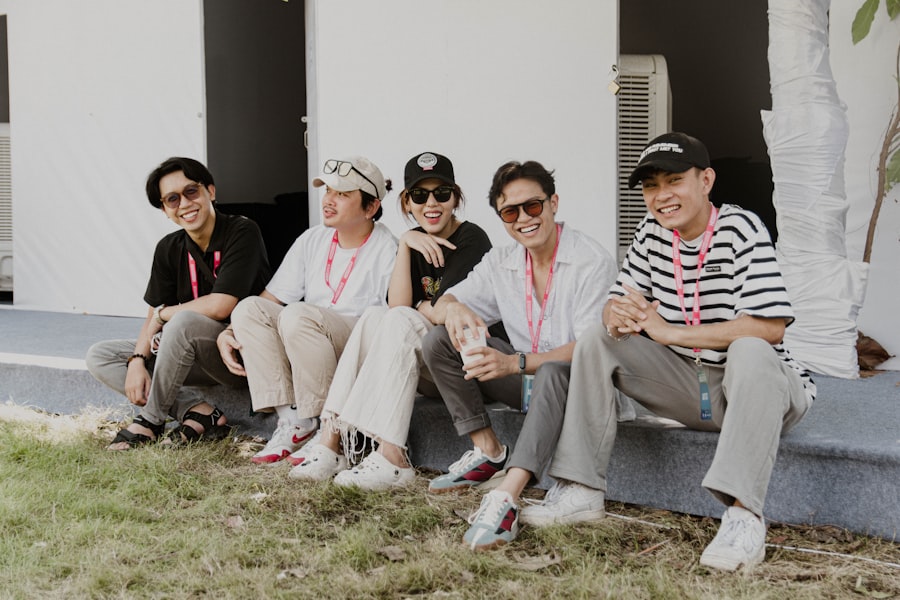Bias is an inherent part of human cognition, shaping the way you perceive the world and interact with others. At its core, bias refers to a tendency to favor one perspective over another, often leading to unfair judgments or decisions. This can manifest in various forms, from personal preferences to systemic inequalities.
Understanding bias is crucial because it influences your thoughts, actions, and relationships, often without your conscious awareness. Recognizing the presence of bias in your life can lead to more informed choices and foster a more equitable society. The importance of understanding bias extends beyond individual awareness; it has profound implications for social justice and community cohesion.
When you acknowledge your biases, you open the door to empathy and understanding, allowing for more meaningful interactions with those who may have different experiences or viewpoints. In a world that is increasingly interconnected, being aware of bias can help you navigate complex social dynamics and contribute to a more inclusive environment. Ultimately, understanding bias is not just about self-improvement; it’s about fostering a culture of respect and equality.
Key Takeaways
- Bias is the inclination or prejudice for or against one person or group, especially in a way considered to be unfair.
- Unconscious, implicit, and explicit biases are the different types of biases that can affect decision making and relationships.
- Identifying your biases through self-reflection and awareness is crucial for challenging and changing them.
- Bias can have a significant impact on decision making and relationships, leading to unfair treatment and discrimination.
- Strategies for overcoming bias include education, self-reflection, and promoting inclusivity and diversity in all aspects of life.
Types of Bias: Unconscious, Implicit, and Explicit Biases
Bias can be categorized into several types, each with its own nuances and implications. Unconscious bias refers to the automatic judgments you make about people based on their race, gender, age, or other characteristics without even realizing it. These biases are often shaped by societal norms and personal experiences, leading to snap judgments that can affect your interactions and decisions.
Recognizing unconscious bias is essential because it operates beneath the surface of your conscious thoughts, influencing your behavior in ways you may not fully understand. Implicit bias is closely related to unconscious bias but is often measured through psychological assessments that reveal your attitudes and beliefs about different groups. This type of bias can be particularly insidious, as it may conflict with your conscious values and beliefs.
For instance, you might consciously advocate for equality but still harbor implicit biases that affect how you perceive individuals from marginalized communities. Explicit bias, on the other hand, involves conscious attitudes and beliefs that you openly express. Understanding these distinctions can help you identify the various ways bias manifests in your life and encourage you to confront them head-on.
Identifying Your Biases: Self-Reflection and Awareness

To effectively address bias in your life, self-reflection is a critical first step. Taking the time to examine your thoughts, feelings, and behaviors can help you uncover biases that may be influencing your interactions with others. You might start by asking yourself questions about your beliefs and assumptions regarding different groups of people.
Consider how your upbringing, culture, and experiences have shaped these views. Engaging in honest self-reflection can be uncomfortable, but it is a necessary process for personal growth and understanding. Awareness is another key component in identifying your biases.
This involves actively seeking feedback from others and being open to their perspectives. You might find it helpful to engage in conversations with friends or colleagues about their experiences with bias. Listening to their stories can provide valuable insights into how biases operate in everyday life and help you recognize patterns in your own behavior.
By fostering an environment of open dialogue, you create opportunities for learning and growth that can lead to a deeper understanding of yourself and others.
The Impact of Bias: How it Affects Decision Making and Relationships
| Impact of Bias | Effects |
|---|---|
| Decision Making | Leads to unfair or discriminatory decisions |
| Relationships | Causes misunderstandings and conflicts |
| Workplace | Impacts team dynamics and productivity |
| Society | Contributes to inequality and social injustice |
Bias has far-reaching consequences that can significantly impact your decision-making processes and relationships with others. When biases go unchecked, they can lead to poor judgments that affect everything from hiring practices to personal relationships. For example, if you unconsciously favor candidates who share similar backgrounds or experiences during a hiring process, you may overlook qualified individuals who could bring diverse perspectives to your team.
This not only limits opportunities for others but also stifles innovation within organizations. In personal relationships, bias can create barriers to understanding and connection. If you hold preconceived notions about certain groups of people, you may find it challenging to form genuine relationships with individuals from those backgrounds.
This can lead to misunderstandings, conflict, and a lack of empathy. By recognizing how bias affects your interactions, you can take steps to cultivate more meaningful connections with others. Acknowledging the impact of bias allows you to approach relationships with an open mind and heart, fostering a sense of community and belonging.
Overcoming Bias: Strategies for Challenging and Changing Your Biases
Overcoming bias requires intentional effort and commitment to change. One effective strategy is to educate yourself about different cultures, experiences, and perspectives. By actively seeking out information that challenges your preconceived notions, you can broaden your understanding of the world around you.
This might involve reading books by authors from diverse backgrounds, attending cultural events, or engaging in discussions with individuals who have different life experiences than yours. Another powerful approach is to practice empathy by putting yourself in others’ shoes. When faced with situations where bias may arise, take a moment to consider how your actions or words might affect those around you.
This practice not only helps you recognize your biases but also encourages compassion and understanding. Additionally, surrounding yourself with diverse groups of people can provide opportunities for growth and learning. By engaging with individuals from various backgrounds, you can challenge your biases in real-time and develop a more nuanced perspective on the world.
Cultural and Social Influences on Bias: How Society Shapes Our Biases

Your biases are not formed in isolation; they are deeply influenced by cultural and social factors that shape your worldview. From a young age, societal norms and media representations play a significant role in shaping your perceptions of different groups. For instance, stereotypes perpetuated in movies or news coverage can create lasting impressions that inform your beliefs about certain communities.
Understanding these influences is crucial for recognizing how external factors contribute to your biases. Moreover, cultural narratives often dictate what is considered “normal” or “acceptable,” leading to the internalization of biases that may not align with your personal values. By critically examining these societal influences, you can begin to disentangle your beliefs from those imposed by culture.
Engaging in discussions about social issues and challenging prevailing narratives can empower you to develop a more informed perspective that reflects your values rather than societal expectations.
Recognizing Bias in Others: How to Address and Respond to Biased Behavior
Recognizing bias in others can be challenging but is essential for fostering an inclusive environment. When you encounter biased behavior—whether in conversations or actions—it’s important to approach the situation thoughtfully. Start by assessing the context and considering the motivations behind the behavior.
This will help you respond in a way that encourages dialogue rather than defensiveness. When addressing biased behavior, use “I” statements to express how the behavior affects you personally rather than placing blame on the individual. For example, instead of saying “You are being biased,” try framing it as “I felt uncomfortable when that comment was made.” This approach fosters open communication and encourages reflection on the part of the other person.
Additionally, be prepared for resistance; not everyone will be receptive to feedback about their biases. However, by approaching these conversations with empathy and understanding, you create opportunities for growth and learning.
Bias in the Workplace: Recognizing and Addressing Bias in Professional Settings
Bias in the workplace can have significant implications for team dynamics, employee morale, and overall organizational success. It manifests in various ways—from hiring practices that favor certain demographics to performance evaluations influenced by stereotypes. Recognizing these biases is crucial for creating an equitable work environment where all employees feel valued and respected.
To address bias in professional settings, organizations must implement training programs that raise awareness about unconscious biases among employees. These programs should encourage self-reflection and provide tools for recognizing biases in decision-making processes. Additionally, fostering a culture of inclusivity requires ongoing dialogue about diversity and equity within the workplace.
By creating safe spaces for employees to share their experiences with bias, organizations can work towards dismantling systemic inequalities and promoting a more inclusive workplace culture.
Bias in Media and News: Recognizing and Challenging Biased Reporting
Media plays a powerful role in shaping public perceptions and attitudes toward various issues and groups.
As a consumer of media, it’s essential for you to critically evaluate the information presented to you—considering factors such as language choice, framing techniques, and representation of diverse voices.
Challenging biased reporting involves actively seeking out diverse sources of information that provide balanced perspectives on issues. Engaging with media literacy resources can also equip you with the skills needed to discern bias in reporting effectively.
The Role of Education in Addressing Bias: Teaching and Learning about Bias
Education plays a pivotal role in addressing bias at both individual and societal levels. By incorporating discussions about bias into curricula at all educational levels, schools can equip students with the tools needed to recognize their own biases while fostering empathy towards others. Teaching students about historical injustices related to bias encourages critical thinking about contemporary issues while promoting social responsibility.
Moreover, educators must model inclusive practices within their classrooms by creating environments where all students feel valued regardless of their backgrounds or identities. This involves actively challenging biased behavior among students while encouraging open dialogue about differences. By prioritizing education as a means of addressing bias, society can cultivate future generations equipped with the knowledge necessary for fostering inclusivity.
Creating a Bias-Free Environment: Strategies for Promoting Inclusivity and Diversity
Creating a bias-free environment requires intentionality at both individual and organizational levels. Start by establishing clear values around inclusivity within your community or workplace—these values should guide decision-making processes while promoting diversity across all aspects of life. Encourage open dialogue about differences while providing opportunities for individuals from diverse backgrounds to share their experiences.
Additionally, implementing policies that promote equity—such as equitable hiring practices or diversity training programs—can help dismantle systemic barriers that perpetuate bias within organizations or communities. Celebrate diversity through events highlighting various cultures while fostering collaboration among individuals from different backgrounds—this not only enriches experiences but also cultivates understanding among diverse groups. In conclusion, addressing bias is an ongoing journey that requires self-reflection, education, empathy, and action at both individual and societal levels.
By recognizing the complexities surrounding bias—its types, impacts on decision-making processes—and actively working towards creating inclusive environments where diversity thrives—you contribute positively towards building a more equitable society for all individuals regardless of their backgrounds or identities.
Understanding and acknowledging personal biases is a crucial step towards personal growth and effective decision-making. A related article that delves into this topic is available on Unplugged Psychology’s website. This article provides insights into recognizing and addressing one’s own biases, offering practical strategies for self-reflection and improvement. For more information, you can explore the article by visiting this link. This resource is an excellent complement to the discussion on how to see your own biases, providing additional context and guidance.
FAQs
What are biases?
Biases are the inclinations or prejudices in favor of or against one thing, person, or group compared with another, usually in a way that is considered to be unfair.
Why is it important to see your own biases?
It is important to see your own biases in order to understand how they may influence your thoughts, decisions, and actions. Recognizing and acknowledging your biases can help you make more objective and fair judgments.
How can I see my own biases?
You can see your own biases by being open to feedback from others, examining your own thoughts and reactions, and seeking out diverse perspectives and experiences.
What are some common types of biases?
Some common types of biases include confirmation bias, where people seek out information that confirms their existing beliefs, and implicit bias, which are attitudes or stereotypes that affect our understanding, actions, and decisions in an unconscious manner.
How can biases impact decision-making?
Biases can impact decision-making by leading to unfair treatment, overlooking important information, and influencing judgments based on preconceived notions rather than objective facts.




